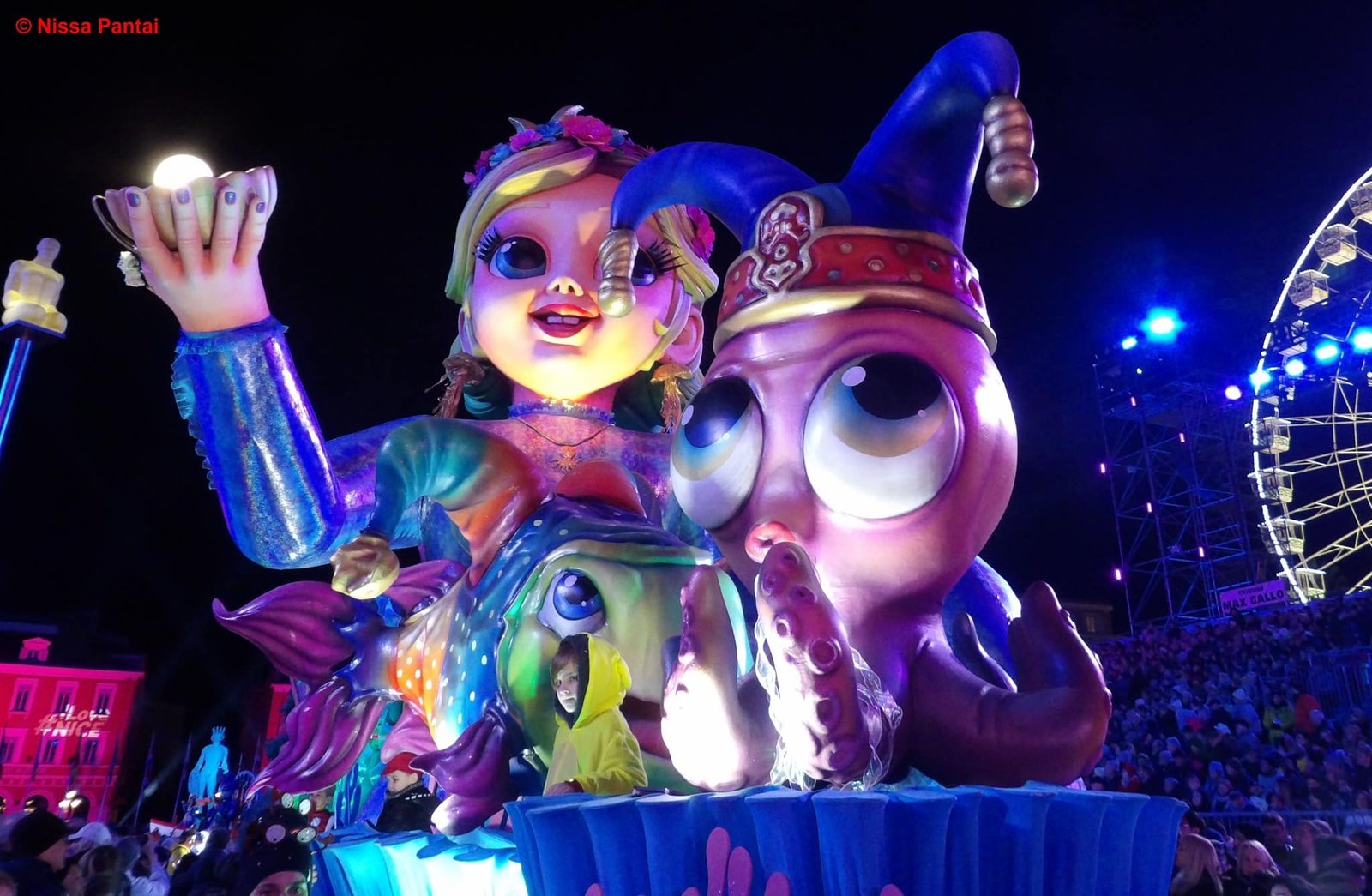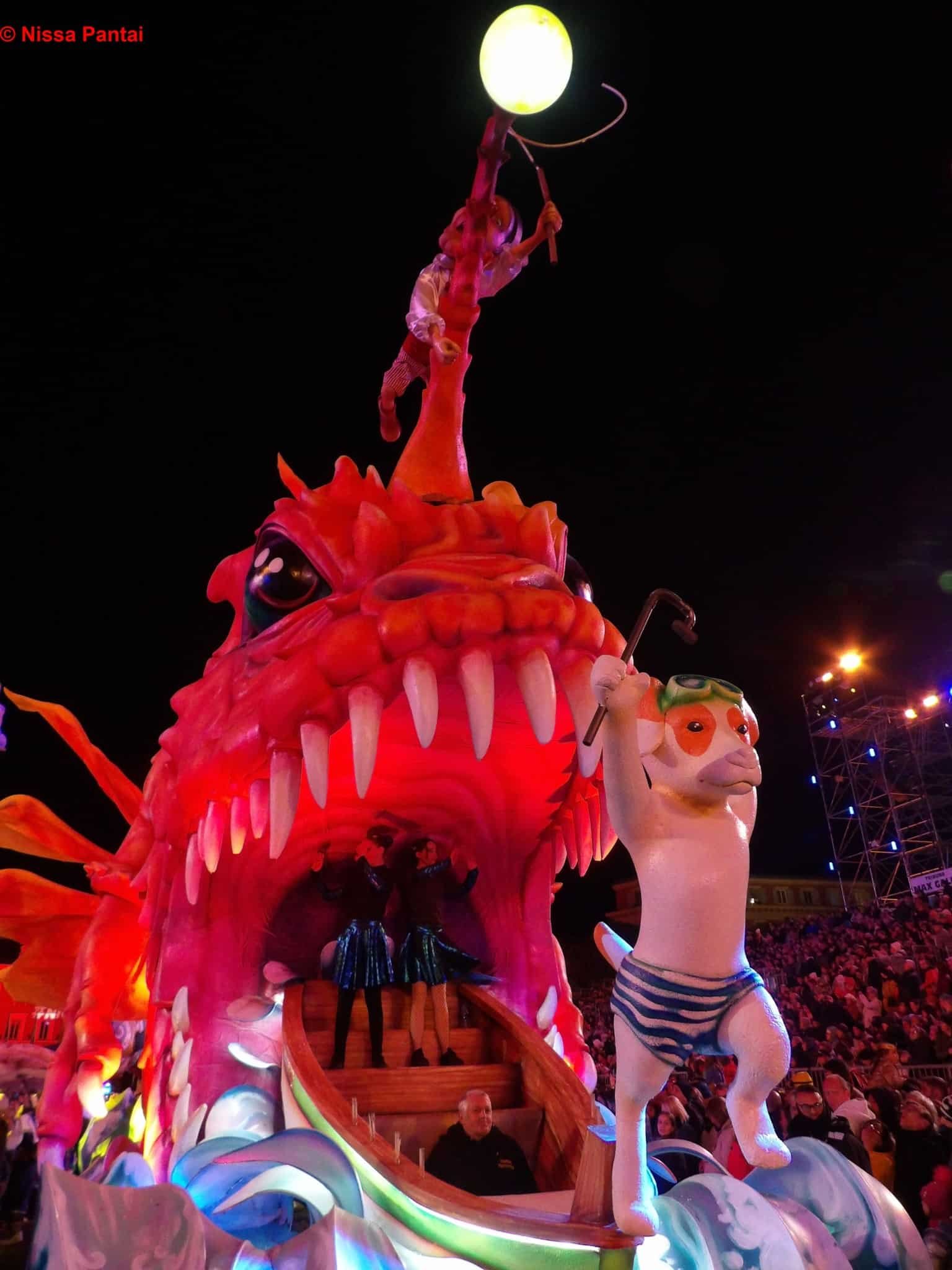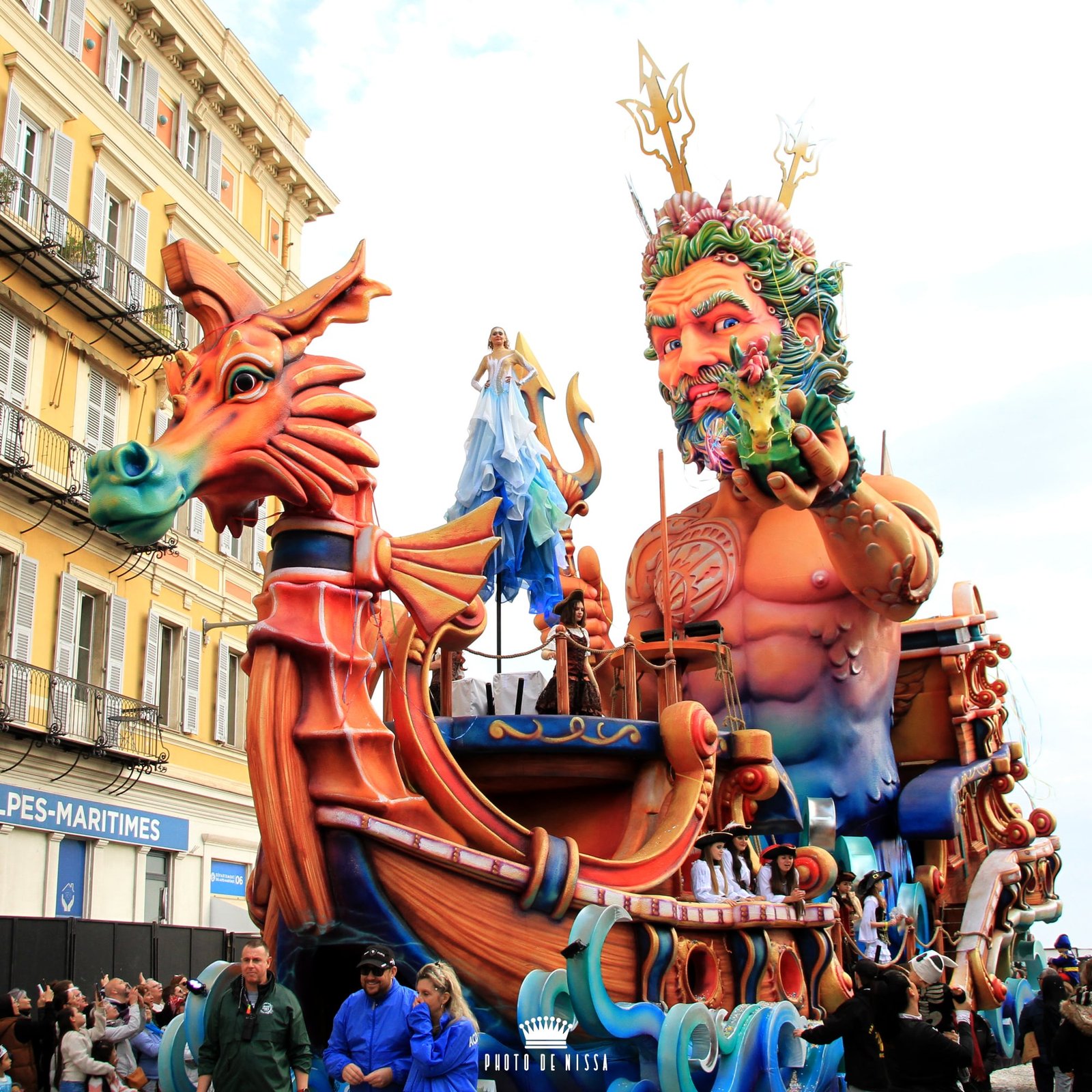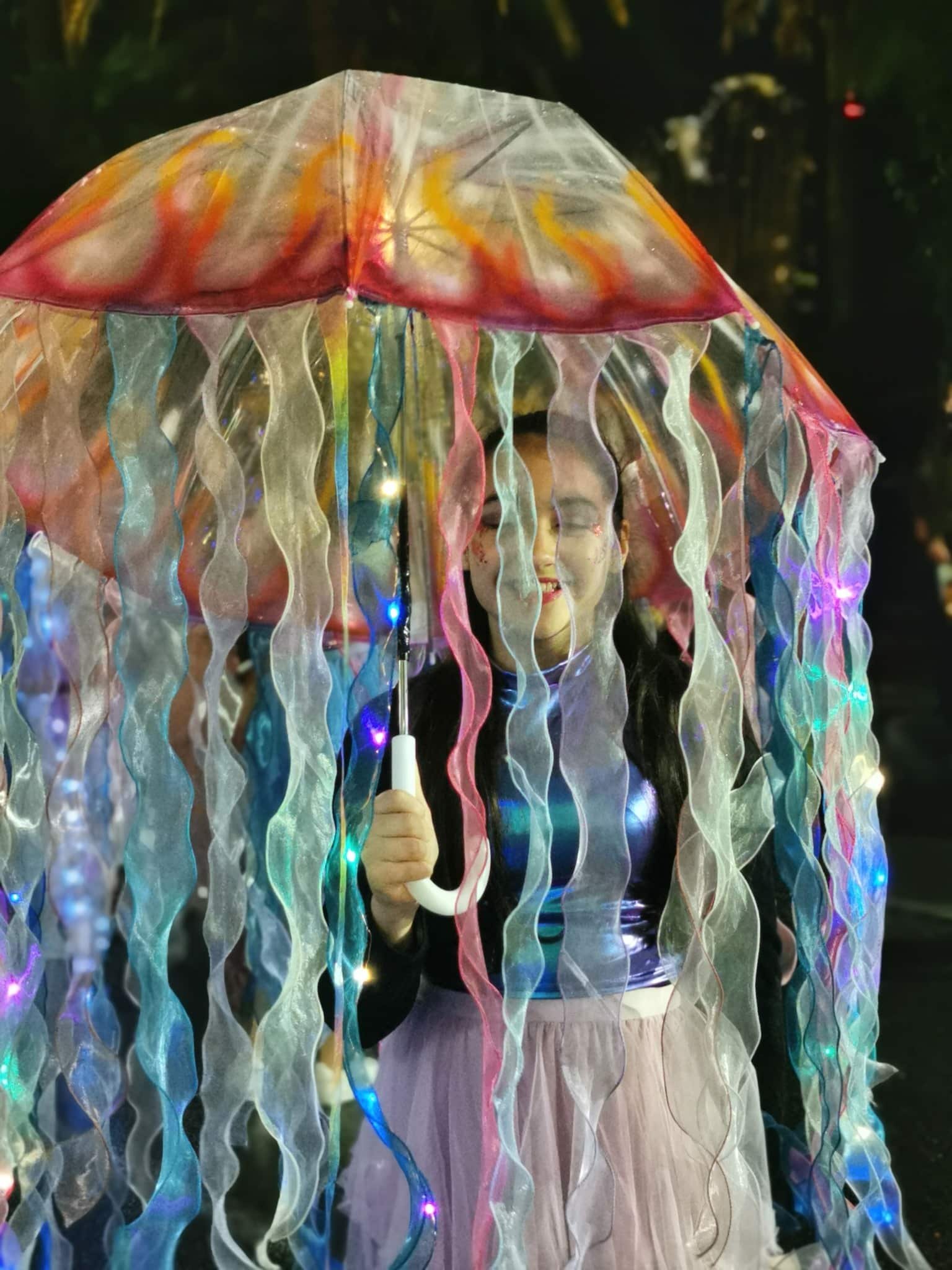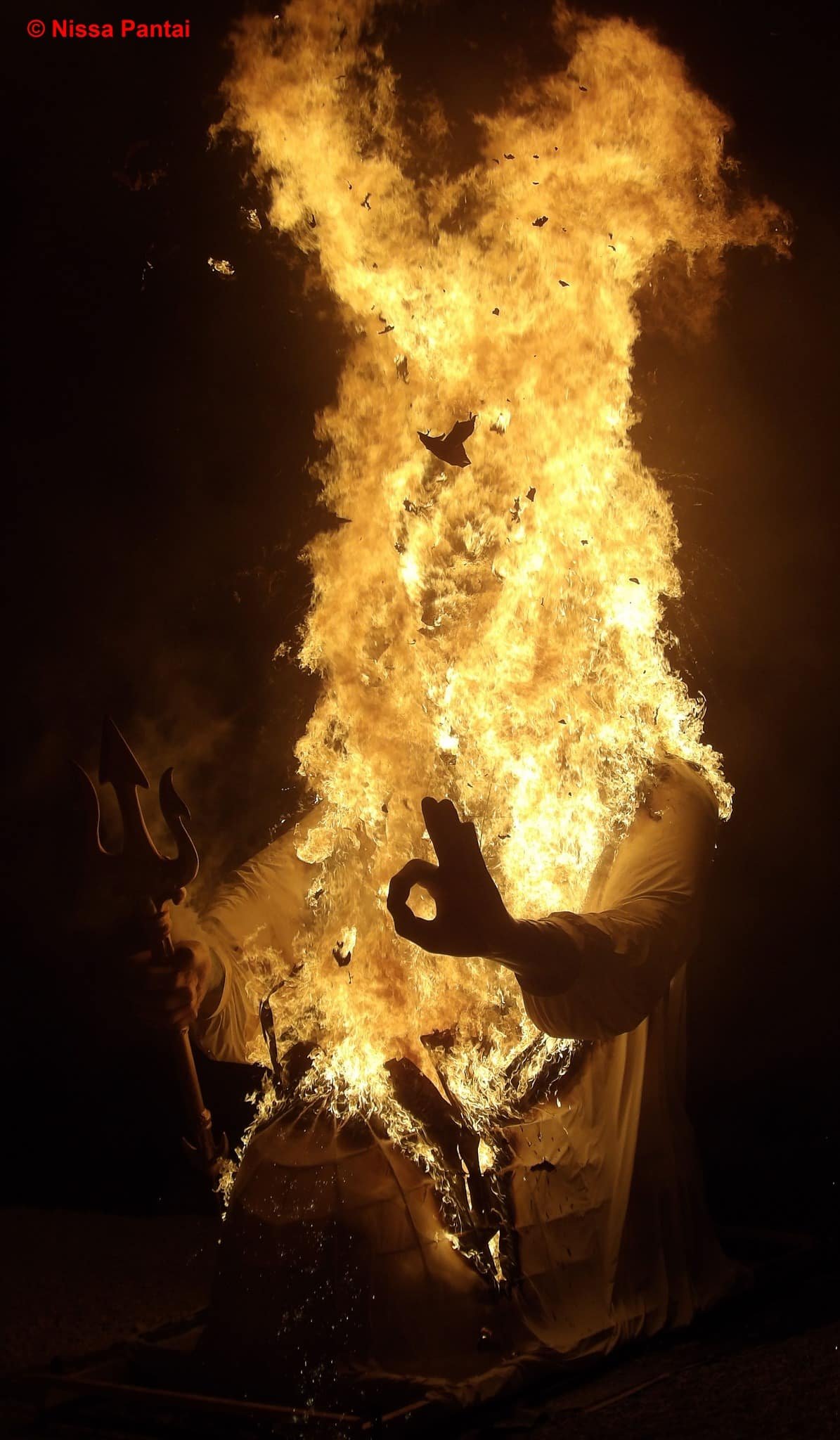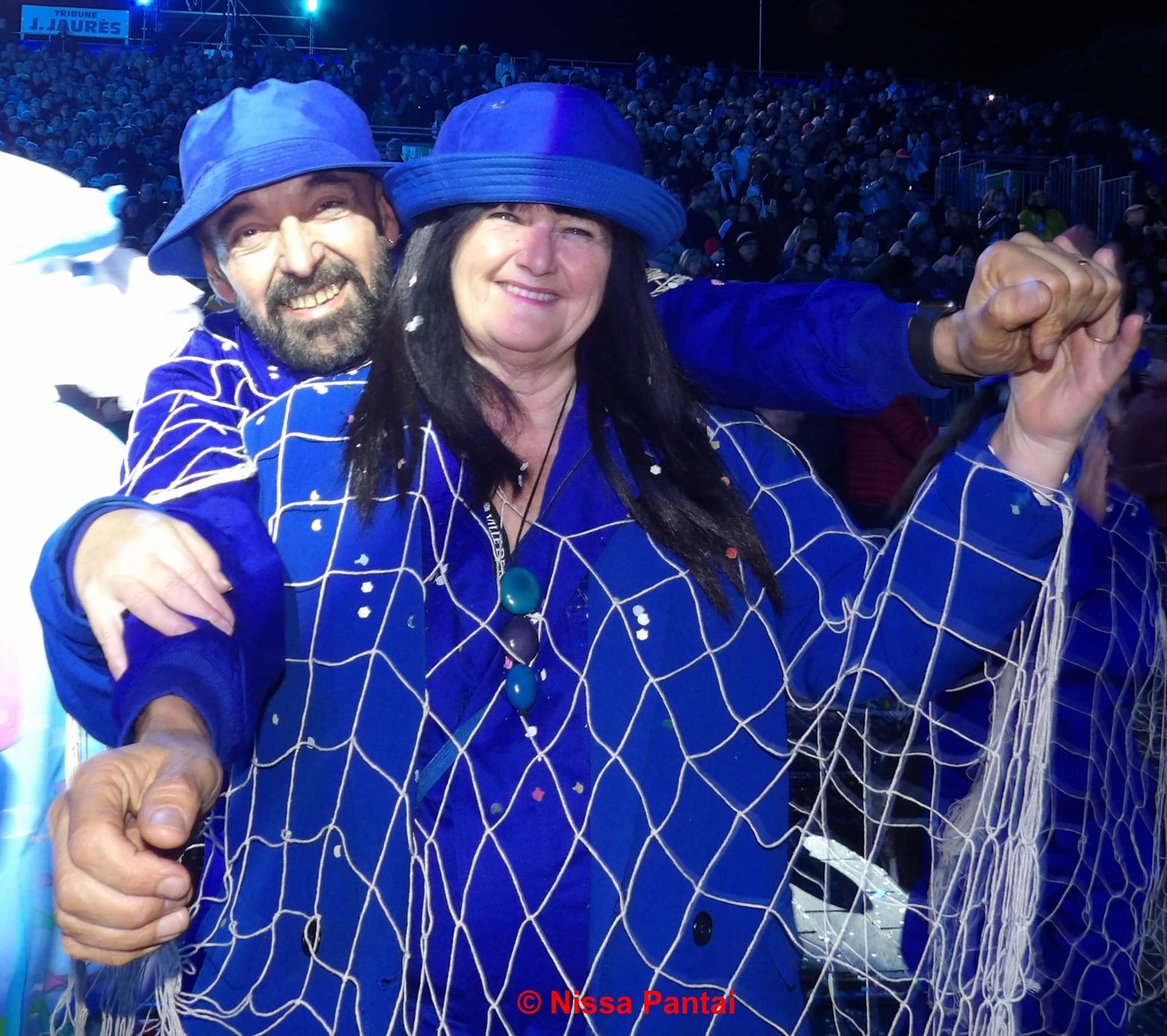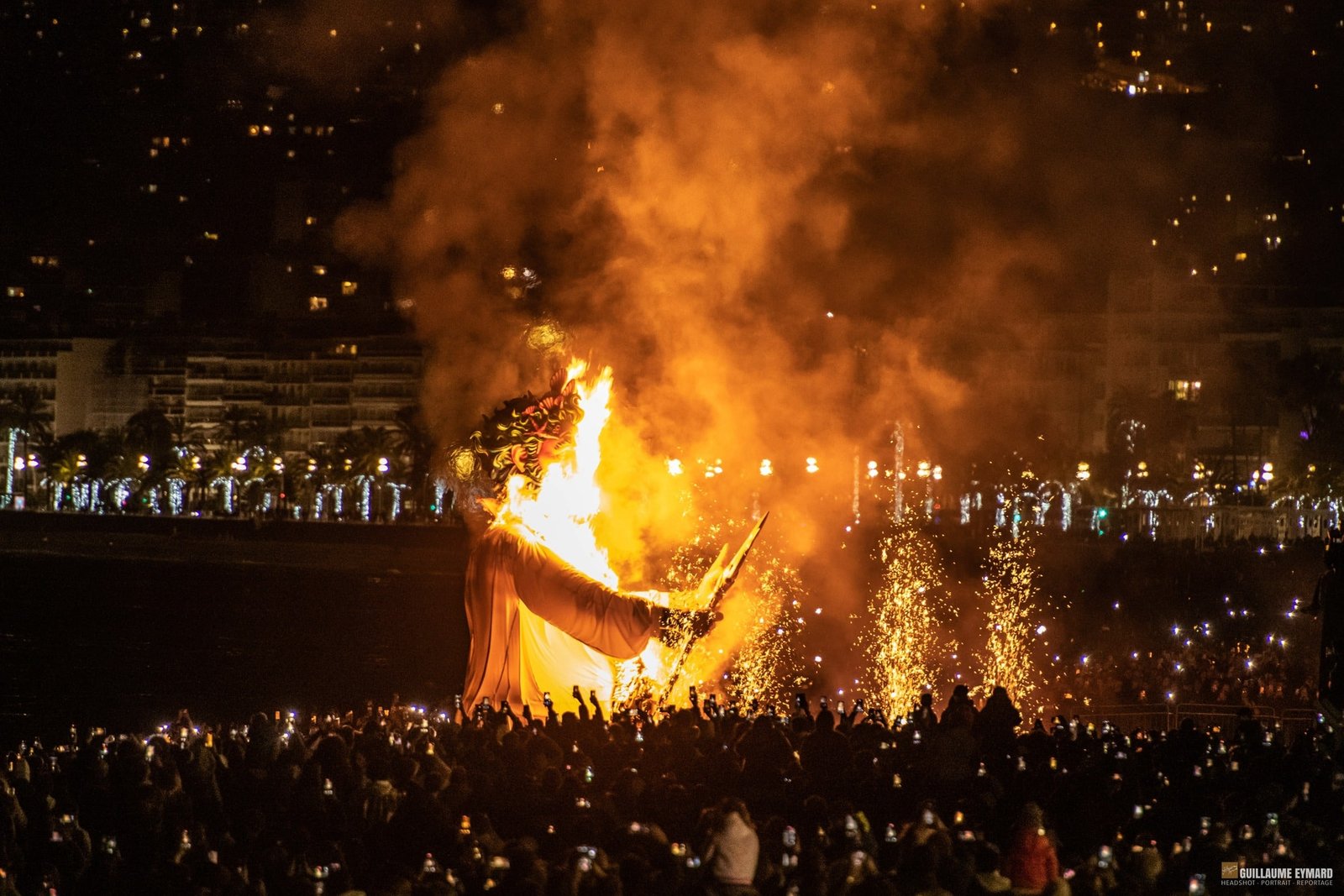Carnaval de Nice – France 2026
Background & History
The Carnaval de Nice, France’s premier and oldest carnival, traces its origins to 1294, when Count Charles II of Anjou organized the first masked procession in the nascent Comté de Provence, blending Italian commedia dell’arte influences with local Provençal folklore to mock nobility during pre-Lent festivities. Evolving from a modest parade of guilds and mummers in the 16th century—featuring satirical floats lampooning kings and clergy amid the Wars of Religion—it formalized in the 19th century as a symbol of Niçois identity, with the 1873 “Battle of Flowers” introducing floral tributes that honored Queen Victoria’s Riviera visits. By the 1920s, under British expat patronage, it had become a global spectacle, drawing 100,000 spectators with illuminated chariots and confetti wars, generating €50-70 million annually for the Métropole Nice Côte d’Azur economy per local tourism data. The event’s dual soul—satirical “Corsi” parades ridiculing power and elegant “Battles of Flowers” celebrating beauty—mirrors Nice’s Riviera allure, from Belle Époque opulence to post-WWII tourism boom.
Through the 20th century, the carnival weathered upheavals: paused during WWI but revived in 1920 with Allied floats, it embraced internationalism in the 1950s, inviting Rio samba schools and Venice masks, while 1980s eco-focus banned single-use plastics amid Mediterranean pollution scares. Organized by the Ville de Nice since 1873, with the Comité des Fêtes since 1904, it has navigated COVID cancellations (2020-2021), pivoting to virtual parades reaching 2 million online, before a 2022 resurgence that integrated sustainability—solar-lit floats reducing emissions by 30%, aligning with Nice’s 2030 carbon-neutral pledge. Socially, it fosters inclusivity: the 2019 Lou Queernaval float championed LGBTQ+ rights, drawing 20,000 allies amid France’s 15% hate crime rise (Stop Homophobie 2024), while family zones like La Carnavalina engage 50,000 children yearly. The 2026 edition, themed “Long Live the Queen!” (from February 11 to March 1), celebrates 152 years, potentially honoring female icons like Simone Veil, blending tradition with modern satire in a city where 40% residents are expats.
In 2026, as Nice’s UNESCO Creative City status amplifies, the carnival endures as a riotous rebuttal to winter doldrums: from 1294’s masked mummers to today’s 150+ floats parading 2km along Promenade des Anglais, it remains a Mediterranean Mardi Gras—confetti as catharsis, flowers as fleeting glory—inviting 300,000 to reclaim joy in the Baie des Anges’ embrace.
Enjoy Your Event Stress-Free with Euro Travelo
Planning a trip to attend a festival, concert, or business event in Europe can be overwhelming—tickets, travel, accommodation, and local logistics all take time and effort. Euro Travelo makes it simple by providing everything you need through one trusted company. You save time, avoid stress, and enjoy a seamless experience from start to finish.
Why Choose Euro Travelo:
- Secure and easy ticket booking for concerts, festivals, theaters, and business events.
- Complete travel planning including flights, trains, and local transportation.
- Accommodation arrangements near event venues, tailored to your needs.
- Convenient local transfers, from airport pickups to private shuttles.
- On-site concierge support to help you navigate venues and schedules.
- Custom itineraries and experience packages combining multiple events, tours, and activities.
- Secure payment process, making it safe and convenient to book all services online.
- Flexibility: even if you need only one service, we can assist individually.
Event Highlights
- Main activities or performances: The centerpiece “Corsi” illuminated parades (February 14, 17, 21, 24, 28; 8:30 PM, Place Masséna to Promenade des Anglais) feature 150+ colossal floats—satirical chariots up to 20m tall, themed “Long Live the Queen!” with royal caricatures—pulled by 1,000 costumed performers amid 10,000 dancers and 50 international troupes (e.g., Brazilian samba, Swiss clowns), lasting 2 hours each and drawing 200,000 spectators nightly.
- Special traditions or features: The “Battle of Flowers” parades (February 18, 21, 25, 28; 2:30 PM) showcase 18 floral floats adorned with 100,000+ fresh blooms (mimosas, carnations), pelted in petal showers—a 1873 ritual honoring Nice’s perfumery heritage, with 5,000 participants tossing 10 tons of flowers. The Grand Charivari opener (February 11, 4:00 PM, free) kicks off with brass bands and confetti cannons, while the closing Veglione’s Ball (March 1, 7:00 PM, Opéra de Nice, €50–€100/$55–$110 USD) revives 18th-century masked galas with DJs and orchestras.
- Unique attractions for visitors: The “Lou Queernaval” (February 27, 8:00 PM, free in enclosure) fuses queer cabaret with drag parades, featuring 500 performers in a safe-space spectacle since 2019. La Carnavalina family zone (February 14, 1:00 PM, free) offers kids’ workshops (mask-making, €5/$5.50 USD) and mini-floats, while the Village du Carnaval (Promenade du Paillon) hosts 50 artisan stalls with Niçois crafts—2026 may add VR float designs.
Date & Duration
- Dates: February 11 – March 1, 2026 (confirmed via nicecarnaval.com; 19 days of core festivities, with pre-events from February 8)
- Duration: 3 weeks (daily from February 11; peak weekends February 14–March 1)
- Daily Schedule: Parades 2:30 PM (day) or 8:30 PM (night, 2 hours); balls 7:00 PM–midnight; village open 10:00 AM–10:00 PM.
- Pre-event Milestones: Theme reveal December 2025; tickets open December (nicecarnaval.com); float construction January; Charivari opener February 11.
Venue / Location
- City: Nice, France
- Main venue: Promenade des Anglais, a 7km seaside boulevard from Jardin Albert Ier to Quai des États-Unis—transformed into a 2km parade route lined with grandstands for 20,000 seated spectators.
- Notable areas: Place Masséna (start point, floral battles); Promenade du Paillon (Village du Carnaval, artisan hub); Opéra de Nice (closing ball); Enclosure zones A/B (stands for parades, €20–€50/$22–$55 USD). Paved seafront—flat, accessible; 2km loop.
- Google Maps address: Place Masséna, 06000 Nice, France (coordinates: 43.696°N, 7.269°E; full map download at nicecarnaval.com/carte).
Ticket Information
- How tickets are sold: Online via nicecarnaval.com (opens December 2025); phone +33 4 93 92 03 00 (Mon–Fri 9 AM–5 PM); on-site at Village du Carnaval kiosks (cash/card, from February 11). No resale (fines €15,000 per French law); app for mobile tickets.
- Admission: Free for street viewing/pedestrian zones (costumed full outfits grant free enclosure access); paid for grandstands (€20–€50/$22–$55 USD per parade); balls €50–€100 ($55–$110 USD); under-12s €10–€25 ($11–$27.50 USD).
- Ticket pricing in USD: Grandstands $22–$55 (€20–€50); balls $55–$110 (€50–€100); family bundles €80–€150 ($88–$165 USD) for 4.
- Minimum ticket pricing: $0 USD (free zones); $22 USD (basic stand).
- Special seating or VIP options: Accessible stands €20–€30 ($22–$33 USD, companion free); VIP (€100+/$110+, priority entry, champagne); costumed free entry (full outfits only, no accessories); Zone A/B enclosures for parades.
Contact Information
- Email: info.carnaval@ville-nice.fr (general, tickets); programmation@ville-nice.fr (programming); access@ville-nice.fr (accessibility).
- Phone: +33 4 93 92 03 00 (call center, opens December 2025, Mon–Fri 9 AM–5 PM CEST; English/French/Italian).
- Website: https://nicecarnaval.com (program, tickets, map); Nice Events app for live chat (event days).
- Social Media: @nicecarnaval (Instagram, 50k+ followers for teasers); @FestiCarca (X/Twitter, updates); Facebook (live streams); YouTube (highlights).
- Key Staff: Director: Ville de Nice team; Programming Lead: Mairie de Nice; contact via email.
- Press/Volunteers: Press via info@; 300+ volunteers (stewarding, floats) open January 2026 via site.
- Note: Responses 24–48 hours; GDPR-compliant; multilingual support.
Cultural Experience
The Carnaval de Nice pulses with Provençal pageantry, where 1294’s masked mummers—mocking Anjou counts amid commedia dell’arte farces—bloom into a Riviera riot of satire and splendor, the Cité’s ramparts yielding to Promenade des Anglais’ azure embrace. The “Corsi” parades, with 150+ floats lampooning queens and tyrants in “Long Live the Queen!” motifs, revive 19th-century satirical carts—giant papier-mâché caricatures pelted with confetti since 1873, symbolizing cathartic rebellion. Costumes cascade: Revelers in plumed tricornes and rococo gowns for Veglione’s Ball, or sequined samba feathers for Lou Queernaval’s queer cabaret—40% attendees in full regalia per 2025 surveys, blending Venetian masks with Niçois flower crowns.
Performances throb with heritage: International troupes (50 groups, 10,000 dancers) fuse Brazilian batucada with Occitan farandoles in the Grand Charivari opener, while floral battles shower 10 tons of petals—a 1873 tribute to Victoria’s visits, evoking Belle Époque galas. Traditions endure: The closing parade’s firework finale (March 1, 10,000 bursts over Baie des Anges) honors 152 years, as the Village du Carnaval’s artisan tents demo mask-carving, perpetuating forain savoir-faire. Local customs infuse: Niçois salade picnics (€10/$11 USD) under palms, with pétanque amid confetti drifts—fostering la dolce vita since 1920s expat influx. Inclusivity sparkles: Lou Queernaval (February 27, free) champions 20% LGBTQ+ participants, wheelchair-accessible enclosures, drawing diverse crowds countering Riviera’s seasonal tourism isolation.
As twilight drapes the Promenade—LED chariots glowing like Belle Époque casinos—the carnival transcends festivity: a 732-year saga of satire as solidarity, where floats float dreams and petals petal unity in Nice’s eternal azure.
Food & Drinks
The carnival’s culinary carnival feasts 300,000 with Niçois nectar, turning Promenade stalls into a Provençal pantry where 1873’s floral tributes yield to savory symphonies—picnics of socca niçoise (€5–$5.50 USD, chickpea flatbread charred crisp, a 16th-century Ligurian import via sailors) evoking harbor sunsets. Pissaladière (€6–$6.60 USD, onion-anchovy tart on olive-fougasse, 19th-century market staple) bites with briny depth, while vegetarian pan bagnat (€8–$8.80 USD, salade niçoise in crusty roll) honors tuna’s sustainable swap—25% vegan per 2025 polls.
Desserts dazzle: Tourte de blette (€4–$4.40 USD, sweet chard pie with orange blossom, a 17th-century convent secret) or candied orange peels (€3 USD/bag, Nice’s citrus confits since 1700s)—petal-painted for floral battles. Fusion flares: Moroccan couscous (€12–$13.20 USD, lamb-prune in clay pots) at guest tents, reflecting Berber ties, or gluten-free farinata (€5 USD, chickpea pancake) for 15% diverse. Drinks cascade: Bellet rosé (€7–$7.70 USD/glass, local schist-vine pale garnet since Roman times) or pastis (€6 USD, anise milky under ice, Marseillais rite). Non-alcoholic citron pressé (€4 USD, lemon-honey spritz) quenches families.
Dietary delight: 70% stalls halal/vegan (e.g., lentil pan bagnat), compostable bamboo cuts waste 30% since 2022—Greener Festival aligned. Eaten amid confetti drifts, this spread—rooted in Riviera’s larder—inks a savory sonnet to Nice’s festive feast.
Getting There
The carnival’s azure allure pulls 300,000 to Nice’s seafront, a transport tango weaving Côte d’Azur’s rails and routes for seamless February frolics. Nice Côte d’Azur Airport (NCE, 7km/15-min tram, $2 USD) serves 100+ routes (EasyJet to London, Brussels), with multilingual apps. Trains converge: TGV from Paris (5.5 hrs, $80–$120 USD) to Gare de Nice-Ville, then tram 2 to Masséna (10 min, $2 USD). Marseille (2.5 hrs TER, $30 USD) or Cannes (30 min, $10 USD) loop regionally.
Public transport thrums: Tram Lines 1/2 to Masséna (from airport 35 min, $2 USD, step-free 95%); buses 12/14 from station (15 min, $2 USD). Vélo Bleu bikes ($5 USD/day, 1,500 stations) glide 2km from Old Town; walking unveils Promenade’s palms: 1km from station via Place Masséna. Driving? A8 autoroute from Cannes (30 min) or Aix (2 hrs), park at Masséna lots (€20–$30 USD/day, 2,000 spots)—BlaBlaCar carshare ($10 USD from Cannes).
Regional rhapsodies: TER from Monaco (20 min, $5 USD) for glitterati. Accessibility elevates: Free companion trams; audio apps; shuttles (€5 USD). Pro tips: Book TGV 3 months early; arrive pre-2 PM for parades; app reroutes peaks—transit as overture to Nice’s confetti chorus.
Accommodation Options
The carnival’s siren summons 300,000 to Nice’s Riviera rim, demanding lairs that lavish in Belle Époque luxe or bohemian bliss—sited for seaside strolls amid February’s mild zephyrs. Promenade des Anglais’ front, Hôtel Negresco ($390–$650 USD/night), a 1913 icon with Monet murals and truffle breakfasts, gazes at parades—festival bundles include VIP stands ($50 USD). For regal repose, Hôtel du Cap-Eden-Roc ($975–$1,300 USD/night, Cap-Ferrat 10km), a 1870s villa with Michelin-starred infinity pools, shuttles to Masséna (20 min, $20 USD)—petal turndown nods to floral battles.
Mid-range muses: Hôtel Windsor ($156–$234 USD/night, Old Town), a 1900s townhouse with Provençal courtyards and socca tastings, 500m to Place Masséna—sustainable linens tie to eco-floats. Budget bliss: Hôtel Villa Eden ($78–$104 USD/night, Cimiez hill), a family-run 1920s gem with olive grove views, tram 15 (10 min). Boutique brilliance: La Pérouse ($195–$260 USD/night, Port), a fisherman’s villa with harbor balconies and pétanque courts—0.8km to Promenade, evoking 19th-century galas.
Regional retreats: Èze’s Château de la Chèvre d’Or ($520–$780 USD/night, 15km), a clifftop aerie with TGV to Nice (30 min, $10 USD). Airbnbs flourish: Vieux Nice lofts ($104–$156 USD/night for 4) with confetti chandeliers—book via visitnicecotedazur.com for 5,000+ options, prioritizing 06000 postcode for 10-min jaunts; carnival packages ($260–$390 USD, stay + tickets) via site weave rest into the queen’s riotous reign.
Maps
Contact
Video
FAQ's
What is the Carnaval de Nice 2026, and when does it occur?
France's oldest carnival since 1294, a 19-day winter fest (February 11–March 1, 2026) with satirical parades, floral battles, and balls—theme "Long Live the Queen!"; 300,000 attendees celebrate Niçois satire and Riviera splendor.
Are parades free, and what are ticket prices?
Free street viewing/pedestrian zones (full costumes grant free enclosure access); grandstands €20–€50 ($22–$55 USD) per parade; balls €50–€100 ($55–$110 USD); under-12s €10–€25 ($11–$27.50 USD); online December 2025 at nicecarnaval.com—no resale (fines €15,000).
How family-friendly is the carnival, and what kid activities?
Very—free for under-12s; La Carnavalina (February 14, 1:00 PM) offers mask-making, mini-parades (ages 3+, €5/$5.50 USD); assistance dogs OK; flat Promenade aids strollers; arrive pre-2 PM for lighter crowds—30% families per surveys.
What accessibility features support disabled visitors?
Wheelchair enclosures €20–€30 ($22–$33 USD, companion free); BSL parades; audio apps; priority entry—email info.carnaval@ville-nice.fr for plans; 20% diverse, with stewards guiding.
Can I get involved as a volunteer or sponsor?
300+ volunteers (stewarding, floats) open January 2026 via nicecarnaval.com; sponsorships (€1,200+/$1,320+) for branding to info@—boosts €50-70M economy with green focus.


